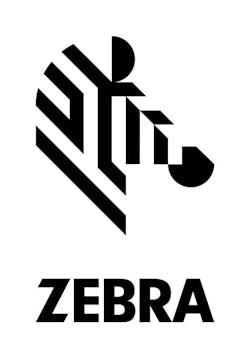The Power Struggle
Power and utility companies are facing the headwinds of change and uncertainty, making it challenging to provide affordable, reliable power to communities.
As renewable sources of energy are added to the electric grid, the scale and complexity of asset management grows. For those operating in the U.S., the Department of Energy expects electricity transmission systems to expand 60% by 2030 and triple in size by 2050.1 Then there is the factor of climate volatility. Extreme temperatures, weather events and wildfires are causing more frequent outages for longer periods of time and straining aging infrastructure (70% of U.S. transmission lines and transformers are more than 25 years old1). Add to that the rising threat and sophistication of cyberattacks. A total of 1,665 security incidents involving the U.S. and Canadian power grids occurred last year alone.2
Charging Ahead with Technology
With pressures escalating, industry leaders are turning to technology to anticipate and address grid vulnerabilities faster. The application of Internet of Things (IoT) sensors, such as Radio Frequency Identification (RFID), can play a critical role in bolstering the reliability and resilience of the grid. Data automatically gathered from RFID solutions and deciphered by AI analytics can provide the timely, actionable insight power companies need to mitigate unexpected and everyday challenges.
Reducing Risks with RFID Technology
The electric grid of tomorrow will certainly be digitally enabled. Already the power and utilities sector is leveraging RFID’s real-time location and tracking capabilities in significant ways:
- Improving Uptime
Utilities can shift from reactive to proactive maintenance with RFID. RFID tags attached to a diverse range of assets—transformers, power lines, substations, towers, poles and more—store unique ID data. In turn, RFID readers act as antennas, capturing assets’ locations and statuses even if the tags are buried underground, at great heights or weathering harsh conditions. This data is then fed into a software platform that provides electrical professionals with a real-time view of their tagged infrastructure spread across vast distances. By identifying potential problems earlier, power and utility companies can respond faster, reducing the risk of outages and improving grid reliability. - Sharpening Situational Awareness
RFID tags integrated with other device acquisition sensors, such as environmental sensors, offer a more robust picture of what’s happening, gauging key metrics like temperature, vibration and power flow. Wirelessly transmitted through RFID readers, the data can support important assessments such as accurate, dynamic line rating, enhanced grid stability and effective topology control. - Tightening Security and Access Control
For critical access points and unmanned stations, issuing HF RFID tags to personnel and linking them to an access control system can prevent unauthorized entry. HF technology offers robust security due to its shorter read range and less susceptibility to interference. Additionally, for larger areas or situations requiring real-time location tracking, consider implementing a UHF RFID system. UHF tags boast a much longer read range, allowing for efficient monitoring of personnel movement and asset location across a wider space, especially during emergencies. - Optimizing Asset Management
RFID technology can eliminate the errors, delays and losses that plague manual tracking. Instead of hunting for assets or entering inaccurate data, power and utility workers can locate what they need instantly. They can maintain accurate records for maintenance and compliance and automate inventory checks, tool check-out/check-in and equipment deployment. RFID can also reveal usage patterns, identifying areas where assets are underutilized and where they’re needed most. - Easing Integration of Renewable Energy Sources
Integrating renewable energy sources like solar and wind into the traditional grid can be problematic. Their variable nature, often dependent on weather conditions, can disrupt grid stability and make demand forecasting difficult. Fortunately, RFID can smooth the transition to a greener energy grid. RFID tags attached to individual panels or turbines can provide real-time data on their energy output, enabling grid operators to monitor performance, identify underperforming units and optimize energy generation. RFID can also track and manage the energy flow within microgrids—independent systems powered by renewables. - Ensuring Timely Availability of Inventory
When outages occur, readily available spare parts and equipment can reduce repair times and restore service to customers faster. It starts with clear and accurate inventory counts, for which RFID produces a 98% accuracy rate. Such precision can provide valuable data and analytics on part usage, lead time and potential gaps, informing strategic decisions that impact grid resilience.
Overall, RFID can prove effective in staying ahead of challenges that impact a grid’s performance. Power utility companies can use this tool to track and monitor their infrastructure, automate tasks, improve situational awareness and harden security.
About Zebra Technologies
Zebra not only makes RFID possible, but also practical. Our holistic ecosystem minimizes vulnerability with the broadest portfolio that covers all utilities’ RFID needs. From configuration to hardware, from software to supplies and service, each component is engineered to work in sync at its peak and is built on decades of field-proven innovation. Let us show you how to seize opportunities hidden in plain sight and act on them in real time.
Sources:
- Improving the U.S. Electric Power Grid: Mitigating Vulnerabilities and Enhancing Operation, Aaron Larson, Power Magazine, July 1, 2023
- Extremists keep trying to trigger mass blackouts – and that’s not even the scariest part, Catherine Morehouse, Politico, September 10, 2023
Sponsored by:



